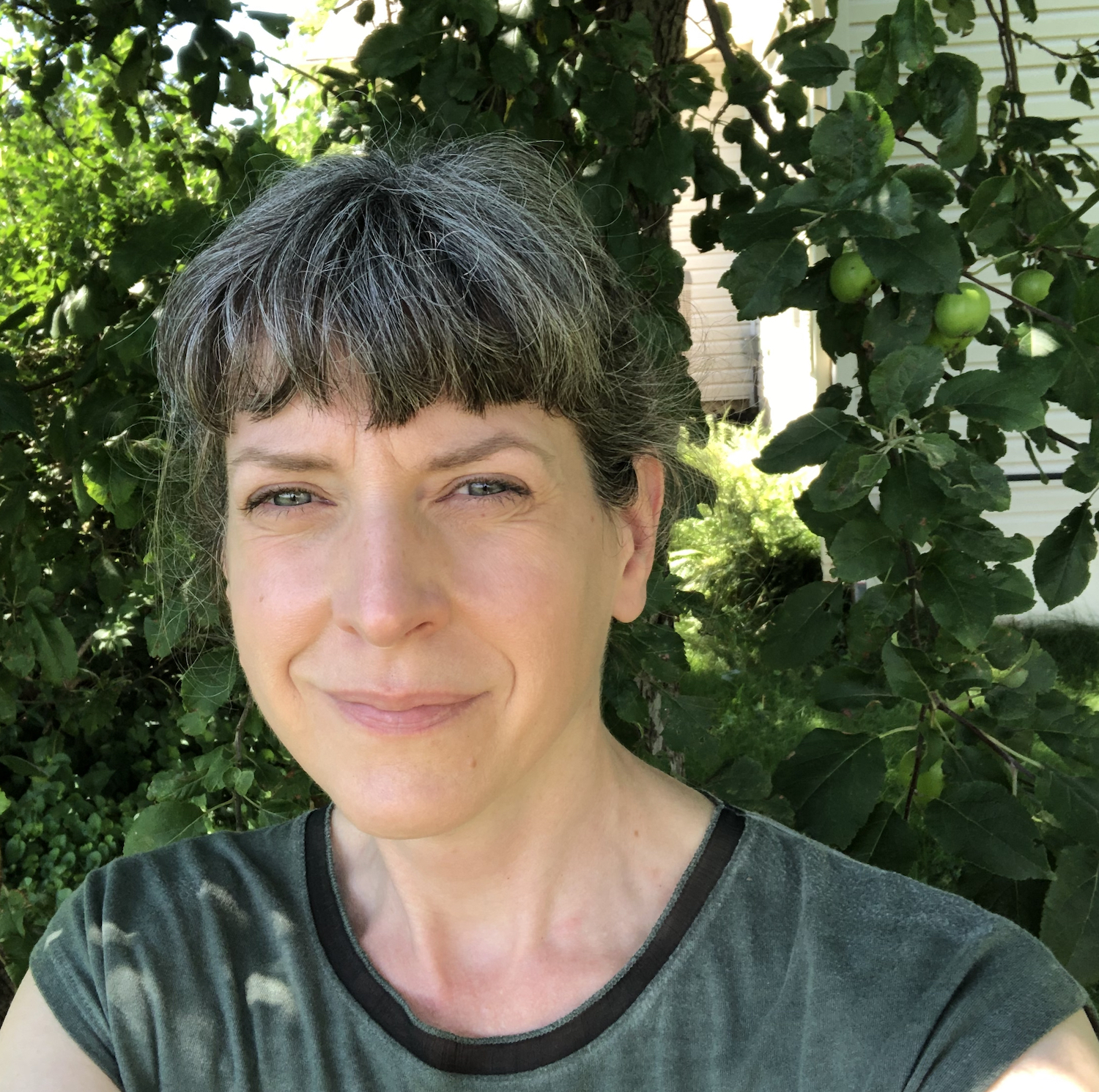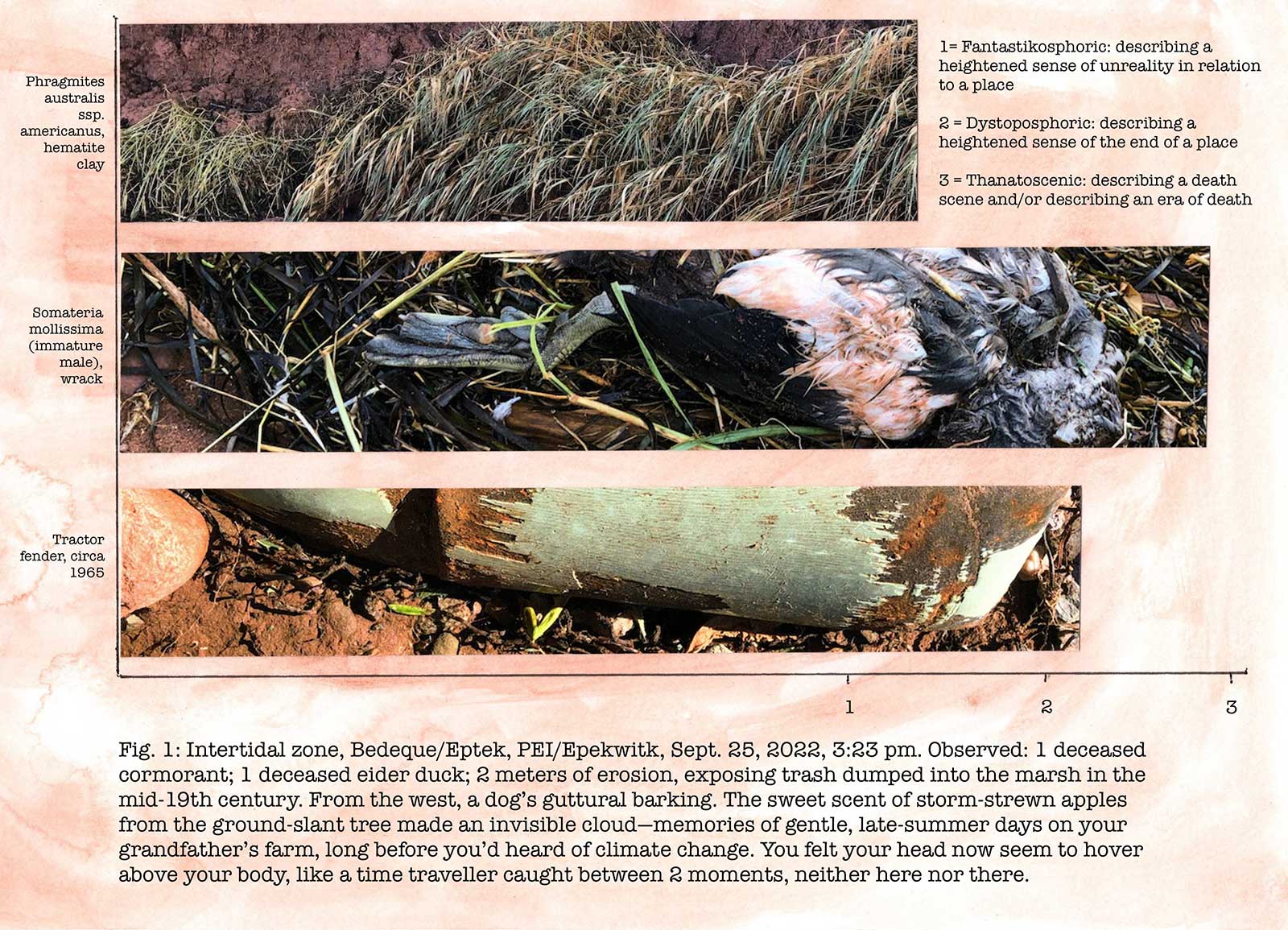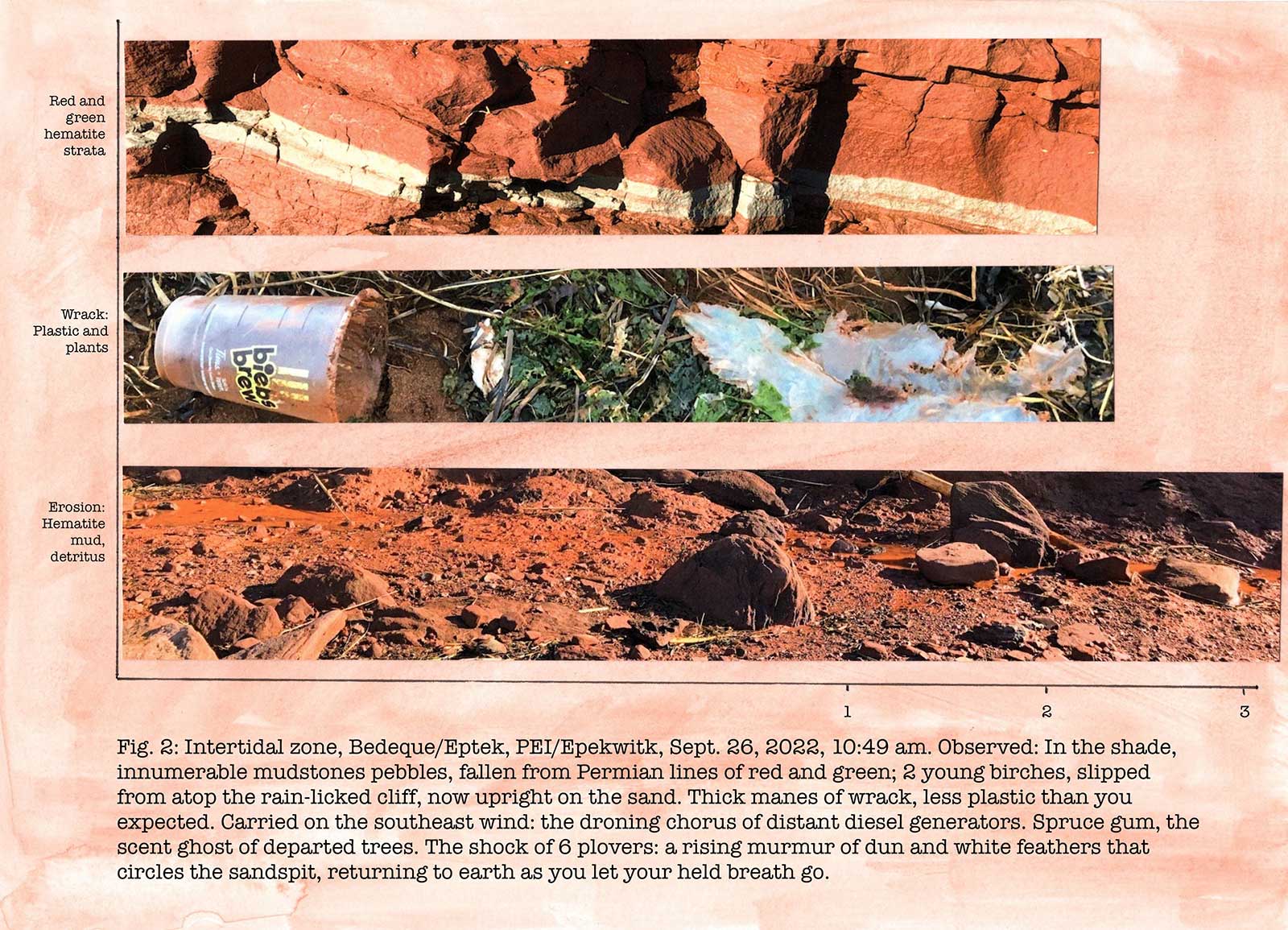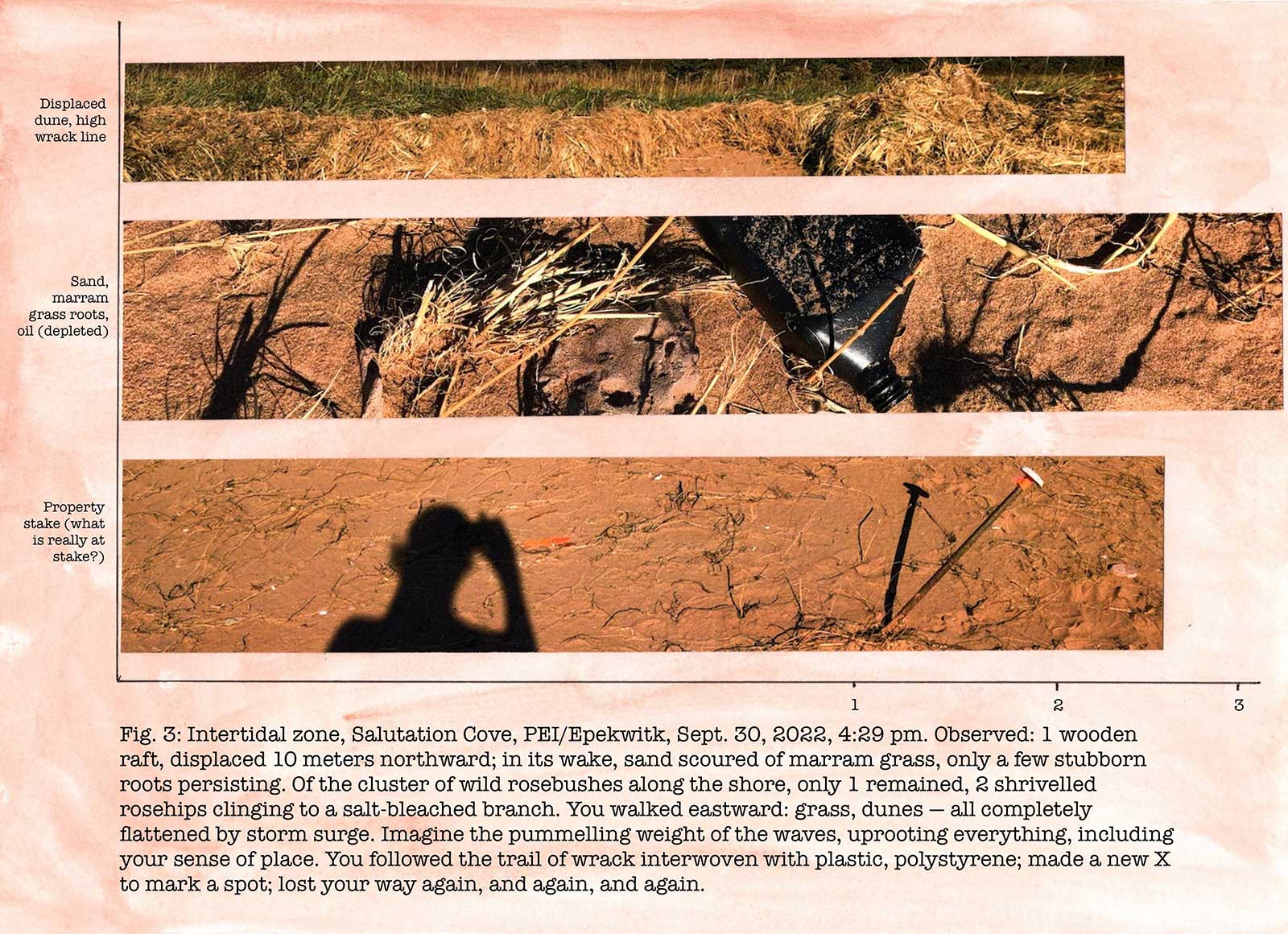Fiona Photo-Graphs
The series of three “Fiona Photo-graphs” is comprised of strips of digital photographic prints formatted as graphs; the paper on which the photos are mounted was washed with watercolour paint handmade by the artist from locally sourced hematite clay. The “photo-graphs” are presented with various descriptors: basic information about the material content of the photo is along the y-axis, a severity scale is along the x-axis (with neologisms alluding to the content in subjective terms), and a caption that begins with objective information and moves into more subjective descriptions of the observed/experienced environment. The photos document some of the damage caused by Hurricane Fiona in the fall of 2022 to the intertidal zone of Prince Edward Island/Epekwitk, part of the larger region of Mi’kma’ki, unceded Mi’kmaq lands. The juxtaposition of objective and subjective descriptions is intended to demonstrate the impossibility of separating the self from the environment, as well as the impossibility of remaining fully objective (i.e., scientists have a subjective response to objective data). Also, the subjective descriptions attempt to convey the difficulty of grappling with feelings of “solastalgia,” a term coined by philosopher Glenn Albrecht to account for a sense of grief and loss caused by changes in the environment. Perhaps these descriptions can help viewers who do not live in coastal regions to better understand the impacts of climate change in these areas, yet the combination of objective and subjective information may be more effective than either alone in provoking viewers to empathize with the sense of loss and to consider how to take action about climate change. Titles: Fiona Photo-graph 1: Grass, duck, rust. Fiona Photo-graph 2: Shale, wrack, mud. Fiona Photo-graph 3: Shoreline, sand, stake.
About the artist
Jane Affleck (she/they) is a settler writer and artist living on PEI/Epekwitk, unceded Mi’kmaq territory. Since completing a Ph.D. in Cultural Studies in 2018, Jane has created several series of visual art works that involve embodied multi-sensory engagement with/in the intertidal zone and has also written about this process, including an essay for the journal Feral Feminisms. In 2020, Jane worked with the Canadian Ocean Literacy Coalition (COLC) as the artist for the Atlantic region in their Understanding Ocean Literacy in Canada study. The results of the study can be found on COLC’s website and in an ocean-literacy-themed issue of the Canadian Journal of Environmental Education (vol. 24(1), 2021). Jane’s writing, including art and book reviews, personal essays, and poetry, has been published in magazines and journals across Turtle Island/North America.





